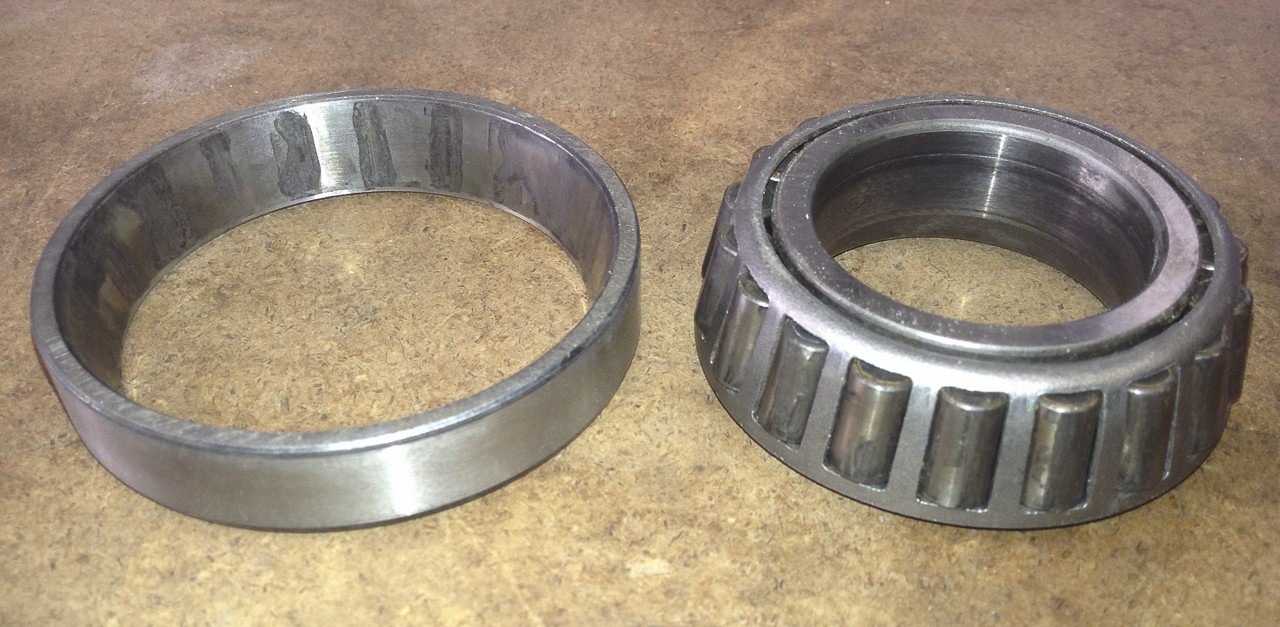
I was concerned about the salty sand we landed on in Baja corroding my wheels, so I rinsed them off and went flying, but one trip about the pattern didn’t get the water out of my nose wheel bearing, which rusted up and made interesting noises when I set it down and rolled out, but only when above 20 mph. Fortunately I could still read the part numbers on these parts and they or rather their equivalents are readily available on Amazon.com and any auto parts store. I got the cup and cone bearing for $13.54 including tax and replaced the cup using a borrowed bearing press.
The nose wheel setup requires shimming to secure the axle to the fork while exerting just the right amount of pressure on the wheel bearing. This tension should be checked during annual inspections. While I serviced this bearing I saw that axle had rotated, destroying the foil shim washer.
The original parts were:
Timken LM67010 Cup
Timken LM67048 Cone





Thanks.
I was asking for the part number to have one available when I will rotate the tires next. The one I want to replace the next time is the outer one next to the wheel nut. During annual inspection I found a local corrosion which eventually will lead to a noisy bearing. Should it get too noisy Ill do this whenever before the next annual.
Somehow water must have made it past the felt seal.
All other bearings are fine.
angelo
Yes good to have a spare, just keep it in its original packaging until you install it. The high carbon steel rusts easily. And if your old one isn’t making audible noise and the cup race is clean (not like the photo above) you can probably keep using it.
A